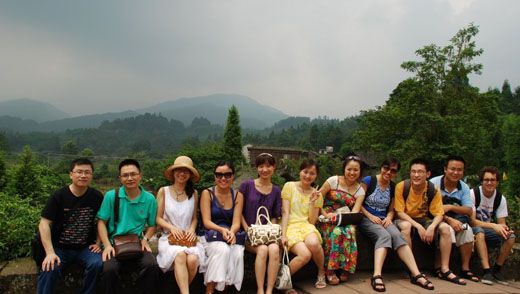儿童可患复发性中风
|
Children can have strokes, and the strokes can recur(重现,再来) , usually within a month, according to pediatric(小儿科的) researchers. Unfortunately, the strokes often go unrecognized the first time, and the child does not receive treatment before the recurrence. Pediatric neurologist(神经病学家) Rebecca Ichord, M.D., director of the Pediatric Stroke Program at The Children's Hospital of Philadelphia, reported today on a study of arterial(动脉的,干线的) ischemic(缺血性的) stroke in children at the International Stroke Conference 2010 in San Antonio, Texas. The conference was sponsored(赞助,发起) by the American Stroke Association. An arterial ischemic stroke results from a blockage(封锁,妨碍) or constriction(收缩,压缩) in an artery in or leading to the brain. Ichord and colleagues at Children's Hospital followed 90 children with a median age(中值年龄) of about 6 years old, treated for stroke between 2003 and 2009. Twelve patients (13 percent) had a recurrent stroke during the study period, most of them within a month of the first stroke. In six of the 12 children with recurrent strokes, no one diagnosed the initial stroke until a recurrent stroke occurred. "Strokes don't occur only in the elderly," said Ichord. "They can also affect children as young as infants. Our findings reinforce(加强,巩固) how important it is to diagnose stroke in children as quickly as possible so that medical caregivers can provide emergency treatment and take measures to prevent recurrence." Strokes can arise in children as a complication of other illnesses, such as sickle cell disease(贫血,镰状细胞疾病) , which obstructs blood circulation, or from an undetected heart condition. A whiplash injury(颈椎过度屈伸损伤) to a child's neck may damage an artery and leave it vulnerable to a blood clot(血块) that causes a stroke. Signs of a stroke are the same as in adults—a sudden loss of neurologic functions such as vision or speech, unsteady gait(步法,步态) , or weakness on one side of the face or in limbs. What is different in children, said Ichord, is that symptoms may be subtle(微妙的,敏感的) , examination is difficult and children are less able to describe their symptoms. Emergency treatment for a stroke typically involves assuring adequate breathing and circulation, supplying intravenous(静脉内的) fluids and improving blood supply to the brain. Medications such as aspirin or blood thinners are given to lower the risk of a recurrent stroke. In the aftermath of a stroke, rehabilitation(复原) is critical to promote recovery. "Because a stroke can recur, we need improved awareness of pediatric stroke among primary health care providers, and more research on the best ways to prevent a recurrence after a child suffers a first stroke," added Ichord. |








